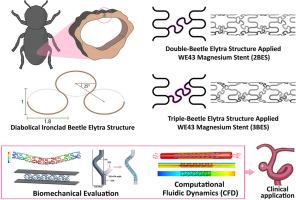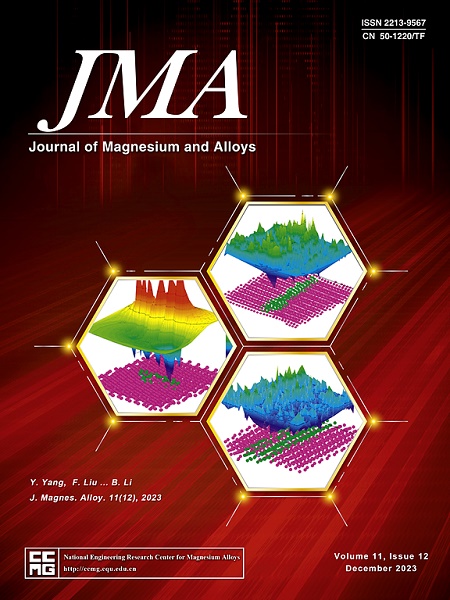Diabolical ironclad beetle elytra-inspired flexible WE43 magnesium endovascular stent structures and their biomechanical potential
IF 15.8
1区 材料科学
Q1 METALLURGY & METALLURGICAL ENGINEERING
引用次数: 0
Abstract
Nature-inspired designs have increasingly influenced biomedical engineering by providing superior biomechanical performance and structural stability. In this study, the diabolical ironclad beetle elytra structure was applied to stent strut designs and thoroughly evaluated through various computational simulations to assess their potential to enhance the mechanical performance of WE43 magnesium alloy stents. Connected elliptical structures with a vertical-to-horizontal length ratio of 1:1.8 were incorporated in varying numbers and then compared to conventional laser-cut stents using 3-point bending, crush, crimping, and expansion tests, internal carotid artery insertion simulations, and computational fluid dynamics analyses. The results demonstrated that the biomimetic stents exhibited significantly improved stress distribution and reduced applied stress while maintaining hemodynamic stability. Computational fluid dynamics simulations further confirmed that the biomimetic could reduce wall shear stress and improve blood flow, thereby potentially minimizing the risk of restenosis and thrombosis. These findings suggest that diabolical ironclad beetle-inspired stent structures may offer enhanced biomechanical performance and clinical safety in magnesium-based endovascular interventions.

求助全文
约1分钟内获得全文
求助全文
来源期刊

Journal of Magnesium and Alloys
Engineering-Mechanics of Materials
CiteScore
20.20
自引率
14.80%
发文量
52
审稿时长
59 days
期刊介绍:
The Journal of Magnesium and Alloys serves as a global platform for both theoretical and experimental studies in magnesium science and engineering. It welcomes submissions investigating various scientific and engineering factors impacting the metallurgy, processing, microstructure, properties, and applications of magnesium and alloys. The journal covers all aspects of magnesium and alloy research, including raw materials, alloy casting, extrusion and deformation, corrosion and surface treatment, joining and machining, simulation and modeling, microstructure evolution and mechanical properties, new alloy development, magnesium-based composites, bio-materials and energy materials, applications, and recycling.
 求助内容:
求助内容: 应助结果提醒方式:
应助结果提醒方式:


